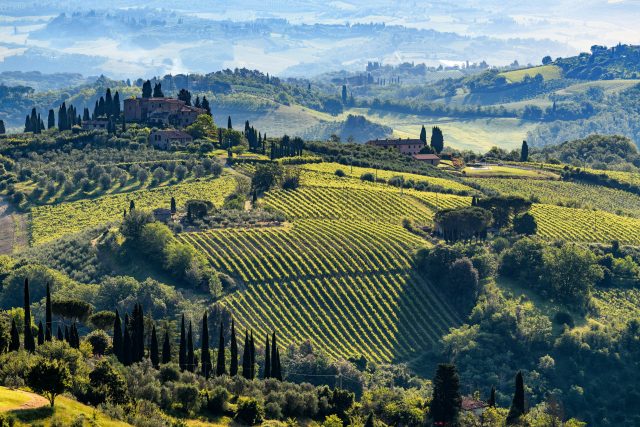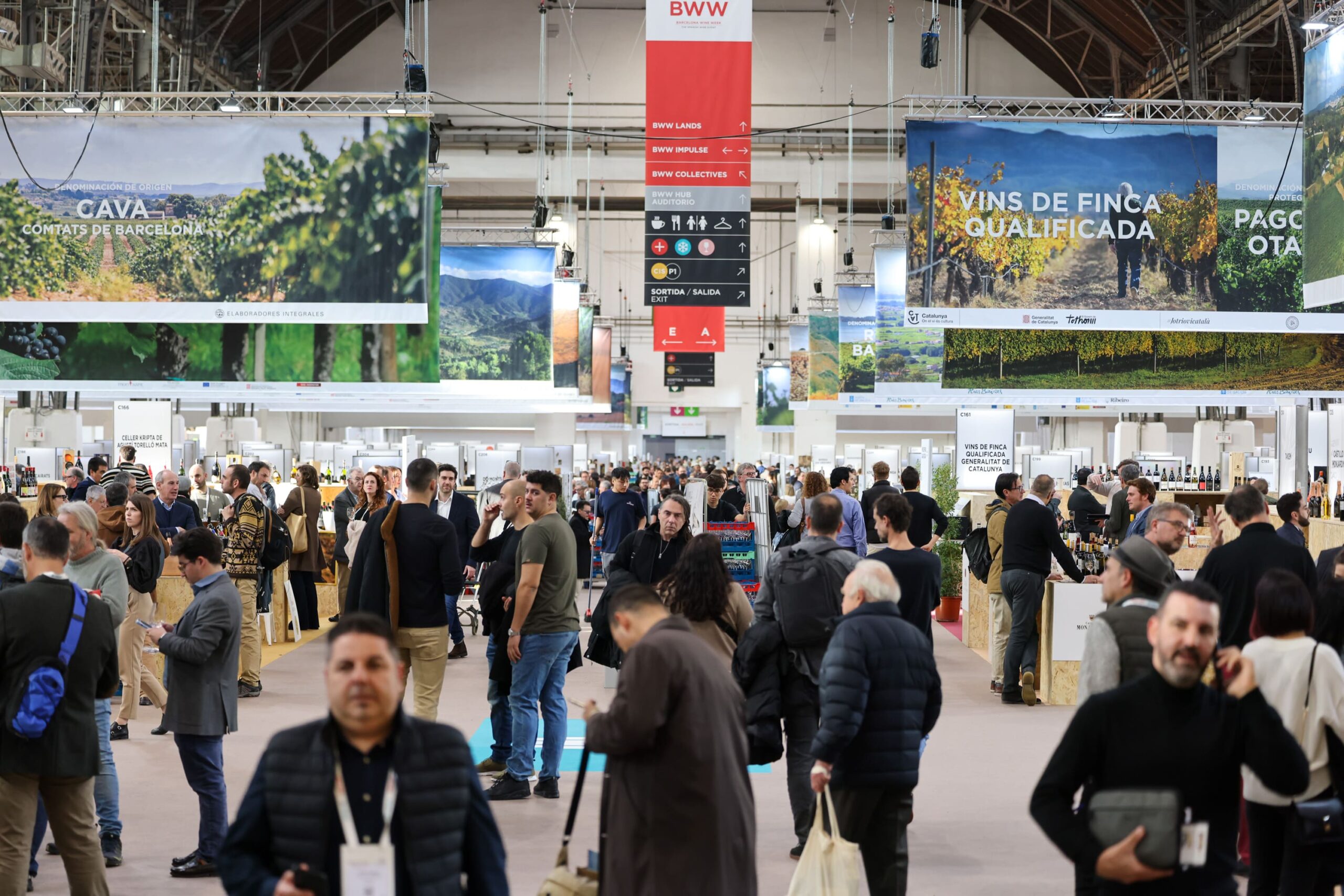Five things you may not know about Chianti Classico
Following a few days in Tuscany earlier this year, Patrick Schmitt MW unearthed some surprising facts about one of Italy’s most famous and historic wine regions – Chianti Classico DOCG.

While it’s tempting to explore the new, emerging or rediscovered areas for viticulture, one does risk side-lining the long-established and successful. And I’m guilty of that when it comes to Chianti Classico – a region I have oft-defended as one of Italy’s best-value sources of fine red wine, and a beacon of Sangiovese-based vinous elegance, but also one I have failed to properly explore.
Indeed, even within Tuscany, where Chianti Classico is located, more of my column inches seem to have been devoted to wines that fall outside this ancient DOCG’s boundaries – be it the prized and pricy brands from Montalcino (Rosso and Brunello), or the up-and-coming estates of the Maremma, as well as the famous Super Tuscans of Bolgheri, along with the rising stars of Montepulciano.
The only Tuscan wine region that seems to get less attention from me than Chianti Classico is Morellino di Scansano – the Sangiovese-dominant red that people tend to forget about when talking about wines from this central-Italian area, with Florence as its capital.
However, after a few brief visits to Chianti Classico over the past two decades, in October this year, I decided to go a little deeper under the skin of the region, taking part in a press trip organised by the Conzorzio, and, importantly, part-led by Italy’s ‘map man’, Alessandro Masnaghetti, who has edited an immensely detailed atlas of the territory, published in 2022.
Following a few days in the region, one of them spent with Masnaghetti, I discovered a few facts about Chianti Classico, which surprised me – and it’s these that I’ve listed below.
1. More trees than vines
Firstly, most of Chianti Classico is not covered with vines. In fact, just a small proportion is devoted to vineyards – 10% of the DOCG’s 70,000ha is planted with wine grapes. In fact, the majority – around 62% – of Chianti Classico’s surface area is covered with forest, the highest percentage of any Italian region.
This adds to the area’s beauty and biodiversity, while helping slow down its hydrological cycle, to the benefit of soil water and vine health in times of heavy rainfall or drought.
The trees also bring a cooling influence to this hilly area, where summer temperatures can surpass 35 degrees Celsius, and the limit for planting vines designated as Chianti Classico DOCG is 700 metres above sea level.
But some feel that the forest cover has gone too far, with the region’s wooded area deemed too dominant, partly because it provides an ideal habitat for wild boar, which can damage vines, and destroy vintages – the animals enjoy eating ripe grapes.
2. Olive groves vie with vineyards
Secondly, there are as many olive groves as there are vineyards. Of the 38% of Chianti Classico that is not forested, 10% of the area is covered with olive trees, the same proportion as vineyards – which leaves 18% for fields and buildings.
And one producer in particular is planting a lot more olives – Count Sebastiano Capponi of Villa Calcinaia. Not only do the fruiting trees thrive in warmer parts of Chianti Classico, but olive oil is experiencing growing demand, due to its health benefits, as well as many uses in food, making it easy to incorporate into a diet.
Partner Content
3. Community-minded divisions
Thirdly, Chianti Classico, since July last year, officially comprises 11 distinct areas called Unità Geografiche Aggiuntive (UGAs), which can be named on bottles of the DOCG’s top tier: Gran Selezione (which represents 8% of the region’s production).
Carrying names such as Gaiole – the largest – and Greve or Radda (the most famous), the sub-regions are not delimited according to soil type nor underlying geology.
As Masnaghetti explained, “The boundaries were traced following local traditions, then physical barriers, such as a stream, valley or road – there were not delimited according to geology.”
He added, “The geology, and soil, are only one factor in the style of the wine, and you might have the same soil, but a different climate.”
What is important within each UGA for Masnaghetti is to foster a sense of community among producers, so they can share knowledge and create an identity for the type of wine that’s made within each of the 11 sub-regions.
4. Organics are dominant
Fourthly, as much as 60% of Chianti Classico’s official DOCG vineyard area (6,800 hectares) is certified organic, meaning it has one of the highest proportions of organic wine of any wine region in the world.
And one UGA is looking to become entirely organic. Speaking to db in October, Luca Orsini from Le Cinciole Podere said that as much as 90% of the vineyards in the Panzano sub-region were certified organic, and the aim is to be 100% organic, which would make it the first UGA to be entirely farmed according to the viticultural philosophy.
As for the 40% of the DOCG that is not certified organic, president of the Consorzio Vino Chianti Classico, Giovanni Manetti, said that all producers that are not certified are managing their properties “sustainably”, because, he added, “that they understand that this is the best way to go for quality, and transferring the territory in to the bottle.”
5. Gallo nero is a no-go
Finally, Chianti Classico’s famous symbol, the black rooster, or gallo nero in Italian, cannot be written on the label. While the stylised image of the animal can appear on wines authorised as Chianti Classico DOCG – and has done so for wines from this part of Italy since 1384 – any reference to gallo nero beyond national borders is currently considered unlawful.
This follows a settlement in 1992 with the world’s largest wine business, E&J Gallo, after which the Consorzio del Gallo Nero changed its name to Consorzio del Marchio Storico – Chianti Classico, thus avoiding any potential confusion with the US-based drinks company.
Meanwhile, this year, the Consorzio Vino Chianti Classico is celebrating its centenary, having been founded in 1924.
Related news
Why Chianti Classico is recalling the 90s with 2024 harvest
WATCH: How Chianti Classico's 2024 harvest is shaping up
Ipsus 2020 takes Chianti Classico Gran Selezione to new heights




